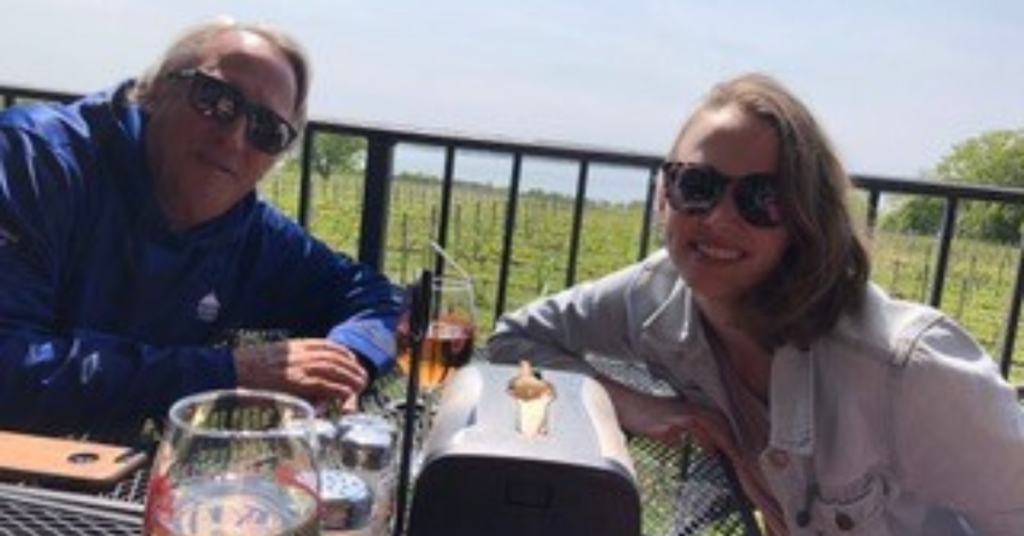When Charlie Ruehl was in high school, his mom Susan recalls he would always miss the same step at the bottom of their staircase. She chalked it up to him being off-balance and in a hurry—after all, he was an athletic, teenage boy and he was always running off to do something.
But a few years later, in 2013, his sister Mary started missing that same bottom step. Susan felt something was off, but, even as a licensed nurse practitioner, she couldn’t explain it.
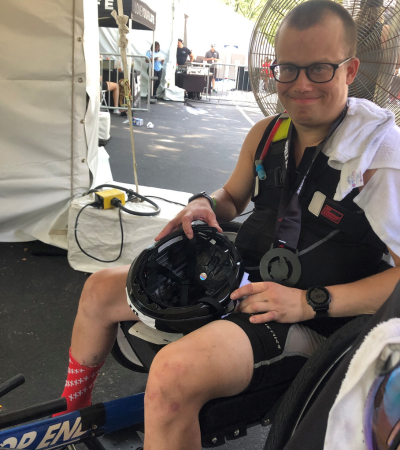
By this time, Charlie was already in college and living on his own. Fortunately, he began a summer internship in New York City and started living with Susan’s sister.
“One day, she called me, and she said—you know, he’s off-balance a lot. I think you should have him checked out,” Susan recalls.
Recognizing that it was too much of a coincidence that both children were showing challenges with movement, Susan’s wheels started spinning. She made an appointment at the nearby Yale Movement Disorder clinic and brought both Charlie and Mary.
“At that first appointment, I think the doctor knew pretty quickly that it was some kind of Ataxia,” Susan says. “He did genetic testing and it was at that point my heart just sank. I’d never heard of Ataxia before, but when he mentioned it and I started reading about it, I was really quite sure that’s what both kids had.”
The official diagnosis came during Mary’s freshman year of college, when she was attending the University of Colorado Boulder—1,800 miles away from her family in Connecticut. For Mary, the diagnosis came as a complete surprise.
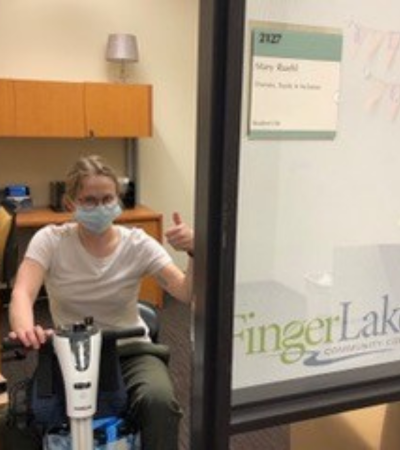
“I was always clumsy growing up,” she says. “I had terrible handwriting and I just wasn’t ever the most coordinated. We’d shrug everything off, and just laugh and say, ‘well, that’s Mary!’”
So when Susan asked her daughter to visit a neurologist, she attributed it to her mom’s curious nature as a clinician and went along with it. “At first, I didn’t understand why we were even going to a doctor. I just thought that’s who I was, and I didn’t understand why they were making a big deal about it,” she remembers.
She never suspected that a life-changing diagnosis was around the corner.
The diagnosis of Ataxia caught her off guard—and she didn’t fully process the information.
“I heard it, but I didn’t process it,” she says now. “I didn’t think about it for a few months, honestly, and then my mental health took a turn for the worse, and I was wondering why that was happening. And I realized, ‘oh wait—maybe it’s because I just got diagnosed with this disease.”
Similarly, Charlie felt incredulous about the Ataxia diagnosis. “When I was first diagnosed, I lost my sense of identity, of who I was. I didn’t really know what to make of it or what it all meant.”
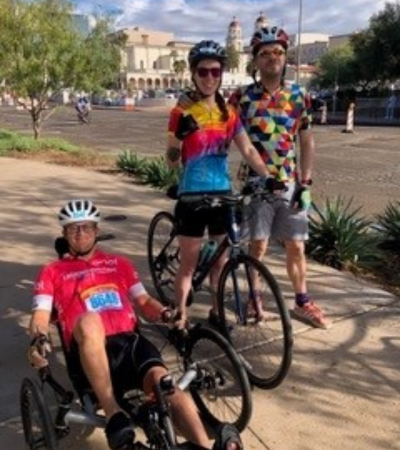
While Charlie and Mary took some time to adjust to the news, Susan made it her mission to learn everything she could about Ataxia from the very beginning, including calling NAF on that very first day. “The minute we got the results of the genetic testing, I called the NAF office and I just said, ‘Oh my God. I just got these results. What do I do now?”
Mary and Charlie were ultimately diagnosed with Ataxia with oculomotor apraxia type 2, commonly known as AOA2 , which is a sub-type of Ataxia where problems with movement worsen over time. In addition to poor coordination and balance, affected people also have oculomotor apraxia, which makes it difficult to move their eyes side-to-side, and neuropathy, which causes weakness, numbness and pain from nerve damage.
When Susan learned that no one in the Yale Movement Disorder clinic had AOA2, she again reached out to the National Ataxia Foundation. “I wanted to know where they were doing research on AOA2, and NAF helped me; that’s how we found Dr. Perlman and Dr. Fogel at UCLA,” she remembers.
“On that very first day, NAF also connected me with Cindy, another mom who has three children with AOA2,” Susan shares. “She saved my life.”
“Here was another person who had a clue about what the diagnosis meant,” Susan continues. “She understood how the diagnosis impacts the whole family, and how all of us feel and react to the news—and how everyone deals with it differently.”
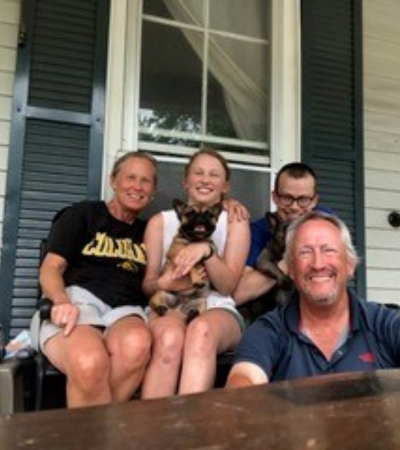
Indeed, each member of the Ruehl family coped with the diagnosis in their own unique way.
When Mary was able to process it, she sought help from therapy and medication, both of which were helpful in getting her through to the other side of the depression and anxiety triggered by the Ataxia diagnosis.
But what’s helped Mary the most in the last five years is an 18-lb. French bulldog named Scooter.
“At college graduation, I was struggling with that change and dealing with my diagnosis. I was having all these existential questions and anxiety about my life, and Scooter gave me a sense of purpose. Looking back, I feel like I was in the grieving process for the first eight years of my diagnosis, but I’m doing better now. And Scooter really, really helped me with that.”
“I had something I had to get up and take care of,” she explains. “Scooter doesn’t care if I don’t walk like everyone else or feel like everyone else. She doesn’t care if I’m in a wheelchair. She just wants to be with me. She thinks I’m awesome.”
And Mary is awesome, although she’s cautious to not hype herself up too much.
“I try to stay in the present, and not ask too many ‘what-if’ questions. I’m trying to be the best I can be today,” she shares.
“There’s a cliche that you never know how strong you are until being strong is the only choice you have. And I used to think that was the dumbest quote—like what does that actually mean? But then I got Ataxia and being strong was the only choice I had.”
Over the last decade, Mary has turned this inner strength into a personal goal to challenge what it means to be disabled. “It’s my mission in life—to be the only disabled girl that does this or that,” she shares. “I want to be something that people don’t expect a disabled person to be.”
Today, Mary is proud of the life she’s created for herself. She works at Finger Lakes Community College in the Academic Support Center, helping students with writing, research, and navigating the college system. She also rides a recumbent trike, creates punch needle art, and writes for BuzzFeed.
She jokes that she’s done as much soul-searching in her lifetime as a 70 year old.
“I’ve grown up a lot over the last decade, and I’m an adult now. At a certain point, I just had to accept this is how things are now and I can move forward from there. You do what you have to do.”
Mary’s brother Charlie processed his diagnosis of Ataxia in a different way.
Charlie had grown up being very active and playing all kinds of sports. He loved to play baseball, soccer and tennis. He played golf regularly and rode his bike, and was on the high school ski team.
So for Charlie, the diagnosis stripped away his sense of his identity as an athlete.
“For a long time, I didn’t know how to do the things I wanted to do,” he recalls. “But then, in the last two or three years, I’ve gone back to how active I was as a teenager.”
Inspired by the desire to challenge himself, Charlie bloomed once he discovered para-athletics, especially for triathlon and biking.
“I wanted to do something that I thought I couldn’t do. I really wanted to challenge myself. I hadn’t swum in 10 years. And I knew it was going to be hard to do the transitions and push my wheelchair for the race, but I wanted to see if I could do it,” he shares.
Spoiler alert: he can. And he’s good at it.
Charlie completed the New York City triathlon in 2022 and the Peasantman duathlon in 2023, along with multiple road races, including the Tour de Tucson, in which he placed first in his division in 2022.
“I feel like I owe it to myself and who I was back then, before my diagnosis, to work hard and give it everything I can. I’ve adapted to my new way of life and now this is my second chance. I’m happy to be back doing stuff I love,” he shares.
Today, Charlie lives most of the year in Tucson, where he is able to ride his recumbent bike almost every day and enjoy a big city and a warm climate, where he’s able to get around more easily and meet up with friends.
“I get to do this every day—and so many people don’t,” he explains. “I have to make the most of it.”
And while Charlie and Mary were the ones who had received the Ataxia diagnosis, Susan also had to cope with what the disease would mean for her and her family.
Susan shares that she spent most of her life trying to live under the radar.
“I’m not the kind of person who wants to ride in a convertible and have people look at me. I used to take the kids to the playground when there weren’t any other kids there,” she laughs.
So when her children were diagnosed with Ataxia, she felt burdened by the weight of the news, and also felt like she was constantly educating others about this rare disease. “I had a lot of trouble navigating conversations with friends in the grocery store,” she recalls. “I’d bump into people and they would ask, ‘How are you?’ and what am I going to say? Fine? Well, I’m not really.”
Fortunately, Susan found solace through support groups and attending NAF’s conference each year. She has found three exceptionally close friends through NAF’s network. “We can talk about the nitty gritty—what medications, what therapies, what vitamins are helping; really we talk about the whole aspect of Ataxia.”
In addition, Susan appreciates the fact that NAF provides a centralized point of reputable information. “If I want to find a doctor or talk to somebody about physical therapy or find a clinic, I know NAF can help with that. And they have many times over the last ten years. We’ve found excellent doctors, each at an NAF Ataxia Center of Excellence. Currently, Charlie and Mary are followed by Dr. Kuo at Columbia, who has done an amazing job of encouraging them to pursue all of their current endeavors!” she says.
Today, Susan is in a much better place to be able to talk about the role Ataxia has played in her family. “The ten-year mark was a turning point. Both kids are wheelchair users, and they have full and independent lives. I’m now at a point where I’m comfortable with anybody I meet or see, and saying, ‘yeah; this is my life.’ My husband Bruce and I are so proud of our kids. We’re lucky we can help them out in the ways we do, but today, they’re both so independent and self-sufficient,” she explains.
“Bruce has never looked for the kind of support I did with NAF. And the kids have dealt with their diagnosis in their own ways,” Susan shares.
“For me, I couldn’t imagine my life without the Ataxia support group community and the friends I’ve made thanks to NAF.”
What is Your Ataxia Story?
As an organization dedicated to improving the lives of those affected by Ataxia, we believe that each story has the power to inspire, connect, and empower others. We invite you to share your personal Ataxia journey with us.
Are you here to read the personal stories, but haven’t yet joined as a member? We hope you find comfort in reading about the experiences of others on their Ataxia journey. We invite you to join as a member to receive a new member story each month. It’s free, and you’ll be kept up-to-date on the latest developments in the Ataxia community.
Recent Member Stories
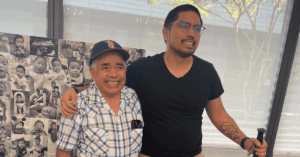
Sly F
Hello my name is Sly. I’m 33 years old. Started to show symptoms at age 21, diagnosed at age 25. Fun fact: before I got Read More…

Lillian O’Connor
I was diagnosed with Gluten Ataxia Disease 2 years ago. I went to every specialist and checked myself into the hospital for tests. I had Read More…
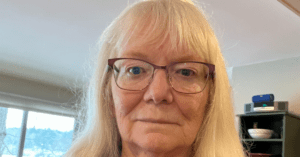
Marybeth Barker
Shortly after returning from a once in a lifetime vacation to Turkey in 2010, at age 58, I began to experience odd neurological symptoms and Read More…
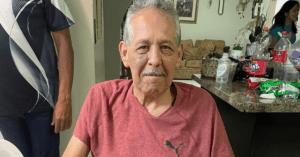
Neyveth Duarte
My name is Neyveth Duarte and my dad was officially diagnosed with Ataxia earlier this year. My dad is my hero and he is going Read More…
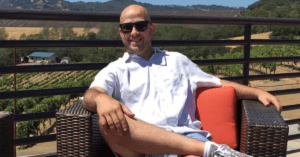
Adam Nelson
I grew up in a small & rural town of about 3,500 people in central Minnesota. I was raised in a blue-collar middle class home, Read More…
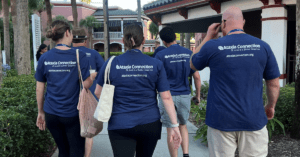
Ataxia Connection Travel Grants Bring Over 50 Attendees to the 2025 Annual Ataxia Conference
Submitted by Theresa Nelson, Executive Director at Ataxia Connection It is an exciting opportunity for our organization, Ataxia Connection, to travel and attend the Annual Read More…


